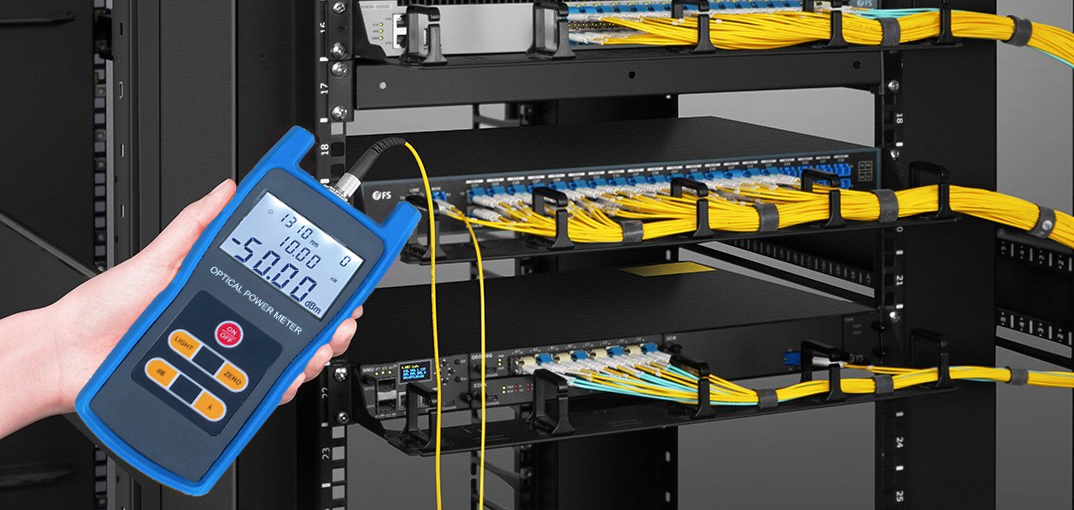Discover the Relevance of Optical Fibre Screening in Modern Telecom
In the realm of modern-day telecoms, the importance of optical fiber screening can not be overstated, as it offers as the backbone for making sure network dependability and efficiency. What are the details benefits that routine screening offers, and how might it form the future landscape of telecommunications?

Comprehending Optical Fibre Testing
Optical fibre testing is a critical process in telecoms that guarantees the honesty and efficiency of fiber optic networks. This testing incorporates a series of treatments developed to examine the physical and functional qualities of optical fibres - fibre testing equipment. Key parameters evaluated include optical power loss, data transfer capability, and fault area, which are necessary for preserving high-grade communication links
The screening process normally entails using specific equipment such as Optical Time-Domain Reflectometers (OTDR) and Optical Power Meters. OTDRs are employed to identify and characterize faults, mates, and connectors within the fiber, while power meters determine the transmitted light signal stamina to determine effectiveness.
In addition, testing is carried out at different phases, including throughout setup, upkeep, and troubleshooting, to make sure that the network satisfies market standards and operational requirements. Conformity with requirements set by organizations like the International Telecommunication Union (ITU) and the Telecommunications Sector Association (TIA) is extremely important.
Benefits of Routine Evaluating
Routine screening of optical fibres yields many advantages that considerably enhance network integrity and efficiency. One of the main advantages is the very early discovery of prospective issues, such as breaks or destruction in the fibre, which can cause pricey downtime if left unaddressed (robotic vision). By identifying these issues proactively, telecoms suppliers can minimize solution interruptions and guarantee constant connection for their consumers
Furthermore, routine testing helps to preserve the integrity of signal high quality. As optical fibres age, their performance can be influenced by variables such as environmental conditions and physical stress. Routine assessments permit for the surveillance of signal loss and overall transmission effectiveness, guaranteeing that the network operates at ideal levels.
Another substantial benefit is conformity with industry requirements. Normal testing sustains adherence to governing needs, consequently reducing lawful and monetary dangers related to non-compliance. It boosts the general lifespan of the fiber facilities by promoting timely maintenance and fixings.

Usual Testing Techniques
Checking optical fibers utilizes numerous approaches to make sure the integrity and performance of telecommunications networks. Amongst one of the most common strategies is Optical Time Domain Name Reflectometry (OTDR), which analyzes the entire length of the fibre by sending a pulse of light and determining the representations triggered by flaws or breaks. This technique offers in-depth information regarding the place and severity of faults.
An additional prevalent approach is making use of Optical Power Meters, which measure the amount of light sent with the fiber. This strategy helps establish the loss of signal stamina, ensuring that it satisfies sector requirements. Furthermore, Aesthetic Fault Locators (VFL) are utilized to recognize breaks or severe bends in the fiber by projecting a visible laser light right into the cable television.
Insertion loss screening is likewise vital, as it measures the loss of signal power you can look here arising from links and interlaces within the network. Furthermore, using Polarization Setting Dispersion (PMD) visit here screening evaluates the influence of fiber attributes on signal integrity.
Each of these techniques plays an important role in preserving the efficiency and integrity of optical fibre networks, eventually contributing to seamless telecommunications operations.
Effect On Network Performance
The honesty and efficiency of optical fibre networks directly influence general network performance. In contemporary telecoms, the effectiveness of information transmission counts heavily on the high quality of the optical fibers utilized. Any kind of degradation in the fibre's problem-- whether because of physical damages, contamination, or extreme bending-- can bring about raised depletion and signal loss, substantially impacting information honesty and speed.
Regular optical fiber testing is vital to recognize and correct possible issues before they manifest as network failings or downturns. Strategies such as Optical Time Domain Name Reflectometry (OTDR) and insertion loss screening allow professionals to gauge the performance of fiber links properly. These tests not only assess the physical condition of the fibres yet likewise make certain conformity with market standards, consequently protecting the network's integrity.
Furthermore, a well-maintained optical fibre network contributes to reduced operational expenses and enhanced consumer satisfaction, as end-users experience less disruptions and higher data prices. Inevitably, the focus on rigorous optical fiber screening methods serves as a cornerstone for maintaining durable telecommunications framework, ensuring that provider can satisfy the growing demands for bandwidth and connectivity in today's digital age.
Future Patterns in Examining
As we look in advance, advancements in modern technology are positioned to reshape optical fibre screening in telecoms. The increase of automation and expert system (AI) is anticipated to boost the performance and accuracy of testing processes. Automated screening systems can carry out extensive analyses with marginal human intervention, dramatically lowering the potential for errors and speeding up time-to-deployment.
Additionally, the integration of artificial intelligence formulas will allow predictive upkeep, allowing network providers to foresee potential concerns prior to they rise right into failings. This proactive approach not only boosts network reliability yet likewise optimizes operational prices.
One more emerging trend is the development of mobile testing tools that offer real-time analysis - optical fibre testing equipment. These gadgets will certainly encourage professionals to execute on-site diagnostics quickly, facilitating quicker resolutions and enhancing solution top quality
The development of 5G advice networks even more necessitates the development of screening methods. As transmission capacity needs raise, traditional screening strategies might no much longer are enough. Innovative solutions such as optical time-domain reflectometry (OTDR) and advanced spectral evaluation will certainly come to be crucial in making certain the honesty and efficiency of high-speed links.

Conclusion
To conclude, optical fibre testing is crucial for ensuring the integrity and reliability of contemporary telecoms networks. Routine testing practices not only aid recognize potential issues such as signal loss and faults but additionally add to boosted network performance and client fulfillment. As the demand for smooth connectivity proceeds to grow, the adoption of advanced screening methods will certainly play an important function in maintaining top quality network requirements and supporting the progressing landscape of telecoms.